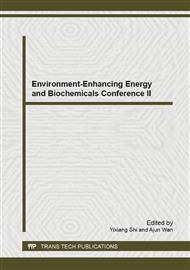[1]
P. Puligundla, , J. Jung, S. Ko, Carbon dioxide sensors for intelligent food packaging applications[J]. Food Control, 2012, 25(1): 328-333.
DOI: 10.1016/j.foodcont.2011.10.043
Google Scholar
[2]
Ramon Bartolí, Josep Maé, Eduard Cabré, et al. Effect of the administration of fermentable and non-fermentable dietary fibre on intestinal bacterial translocation in ascitic cirrhotic rats[J]. Clinical Nutrition, 2007, 3(26): 383-387.
DOI: 10.1016/j.clnu.2007.01.008
Google Scholar
[3]
S Guilbert, N Gontard, M Morel, et al. Protein-Based Films and Coatings[M], CRC Press, Boca Raton. FL, (2002).
Google Scholar
[4]
J. F. Su, Z. Huang, X. Y. Yuan, et al. Structure and properties of carboxymethyl cellulose/soy protein isolate blend edible films crosslinked by Maillard reactions[J]. Carbohydrate Polymers, 2010, 79(1): 145-153.
DOI: 10.1016/j.carbpol.2009.07.035
Google Scholar
[5]
H. P. Li, B. G. Ma, S. M. Zhou, et al. Thermally responsive graft copolymer of soy protein isolate and N-isopropylacrylamide: synthesis and self-assembly behavior in aqueous solution[J]. Colloid and Polymer Science, 2010, 288(14-15): 1419-1426.
DOI: 10.1007/s00396-010-2278-7
Google Scholar
[6]
A Shafaei, F Z Ashtiani, T Kaghazchi. Equilibrium Studies of the Sorption of Hg (II) Ions onto Chitosan[J]. Chemical Engineering Journal, 2007, 133(97): 311-316.
DOI: 10.1016/j.cej.2007.02.016
Google Scholar
[7]
A. Ghosh, M. A. Ali, G. J. Dias. Effect of Cross-Linking on Microstructure and Physical Performance of Casein Protein[J]. Biomacromolecules, 2009, 10(7): 1681-1688.
DOI: 10.1021/bm801341x
Google Scholar
[8]
N Wan, W S. Kamari. Equilibrium and Kinetics Studies of Adsorption of Copper (II) on Chitosan and Chitosan/PVA Beads[J]. International Journal of Biological Macromolecules, 34(2004): 155-161.
DOI: 10.1016/j.ijbiomac.2004.03.001
Google Scholar
[9]
J. Han, S. Bourgeois, M. Lacroix. Protein-based coatings on peanut to minimise oil migration[J]. Food Chemistry, 2009, 115(2): 462-468.
DOI: 10.1016/j.foodchem.2008.12.030
Google Scholar
[10]
L. Chen, G. Remondetto, M. Rouabhia, et al. Kinetics of the breakdown of cross-linked soy protein films for drug delivery[J]. Biomaterials, 2008, 29(27): 3750-3756.
DOI: 10.1016/j.biomaterials.2008.05.025
Google Scholar


